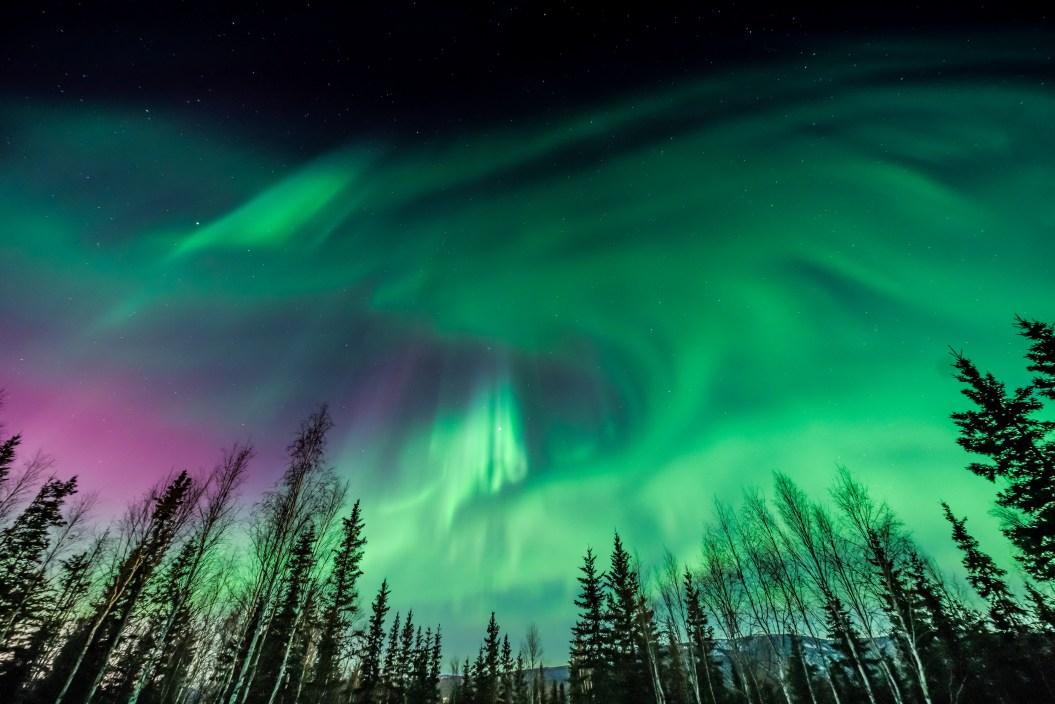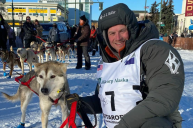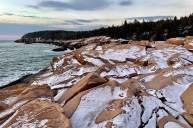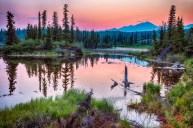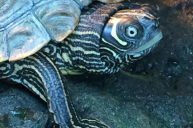While some may view the approaching winter with dread, many people embrace it, bundling up for serene outings after nature has quieted and enjoying the beauty of the first snowfall. If you're among those who can't get enough of the coldest season, there's no better way to kickstart it than a fall trip to Fairbanks, Alaska. The city is located just 200 miles south of the Arctic Circle, so winter comes a whole lot earlier to the town's 32,000 residents than it does to the rest of the United States. While much of the country is still experiencing the height of fall foliage, Fairbanks has already gotten its first (several) snowfalls.
I lived in Fairbanks for several years, and late fall was always my favorite season. While summer in Alaska is lovely, it brings crowds of visitors, and full-on winter in Fairbanks has its own problems, with less than four hours of daylight and temperatures dropping to minus 40. Fall in Fairbanks, however, is both quiet and has manageable weather, making it the perfect place to rediscover the magic of winter before hitting the real deal. With snow falling as early as September, fall in Fairbanks feels a lot like winter, just without the bone-chilling cold and overbearing darkness.
An international airport and direct flights from Seattle make getting to Fairbanks easy, and you'll find numerous options for lodging and food. To help you plan, I've laid out my six favorite things to do on a fall trip to Fairbanks.
1. Soak in Chena Hot Springs
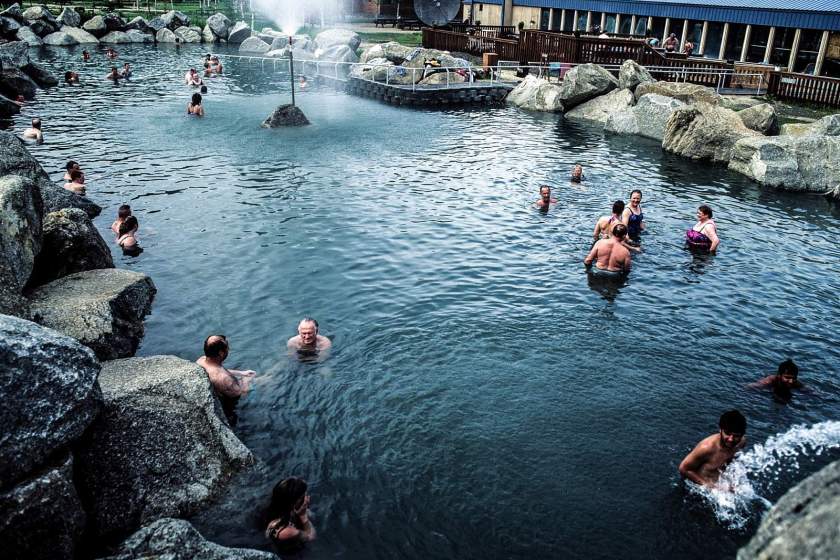
Alaska.org
Located about an hour east of Fairbanks, Chena Hot Springs is a favorite for both visitors and locals alike. The resort is at the end of a dead-end road and is centered on a large geothermal pool. Enjoy a long soak in the pool, then check out the Aurora Ice Museum and Ice Bar nearby, the largest year-round ice environment in the world.
If you don't feel like driving right back to Fairbanks, you can rent a cabin or room to stay in on-site and further explore the area. The hiking trails all around the resort turn into snowshoe and cross-country skiing trails once the snow falls. Chena Hot Springs Road, the road to the resort from Fairbanks, has several options for hiking and cross-country skiing as well, such as Angel Rocks Trail. You can also fish the Chena River for rainbow trout and grayling.
If you're looking for a more remote hot springs experience, book a cabin at Tolovana Hot Springs. Be aware that this is truly off the beaten path, involving a very long drive down a gravel road and an 11-mile hike or ski-in. There is no cell service, and rescue is very far away. While this was one of my favorite winter trips when I lived in Fairbanks, it's definitely an undertaking and requires considerable experience, particularly if you're going in the late fall or early winter.
2. Stay Up Late to See the Northern Lights
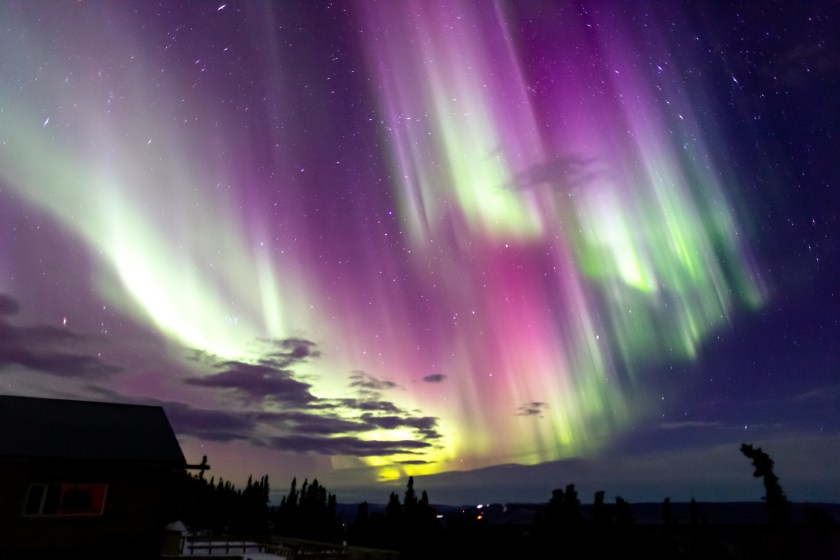
Getty Images, 5279210107801613
While most people plan their northern lights viewing trips for deep in the winter, some of the best shows I've ever seen were in the fall in Fairbanks. The northern lights happen year-round—you just need enough darkness to view them. And while Fairbanks is home to the midnight sun in summertime, by mid-September there are plenty of hours of night during which to see the aurora borealis. You'll also avoid the bitter chill of mid-winter in Fairbanks, where temperatures can drop to minus 40.
Fairbanks is one of the best places in the United States to see the northern lights, being renowned for its clear, cloudless weather and located far enough north to be in the Auroral Zone. While the town itself is populated with 32,000 people, the area surrounding Fairbanks is incredibly remote; a quick, 15-minute drive gets you out of any light pollution, though you can easily see the northern lights right in Fairbanks. When I lived there, I'd routinely see them on my drive to work in the early morning hours.
Plan a fall trip to Fairbanks of at least five days to ensure you get the best northern lights show you can; or, if you live near a hub airport, watch the aurora forecast and book a last-minute trip when you see an upcoming night with strong activity. On a flight home from Seattle one fall, I sat next to a man from Washington who'd seen a strong northern lights forecast for the following night and hopped a last-minute flight to Fairbanks to catch it.
3. Learn About Northern Alaska at the Museum of the North
The University of Alaska's Museum of the North, located on the Fairbanks campus, is one of my favorite museums in the world. Its exhibits feature Alaskan Native artifacts, wooly mammoth skulls, an 8-foot-tall taxidermied brown bear, a painting by Alaskan artists, and a 36,000-year-old mummified Alaskan bison dubbed Blue Babe.
The museum is also the new home of the famous Into the Wild bus, where adventurer Christopher McCandless spent his final days. The bus was removed from the Stampede Trail after numerous tourists themselves died or were seriously injured attempting to reach it. The bus will be on public display once the museum completes its conservation and the surrounding exhibit.
After touring the museum, wander down to the University of Alaska's Large Animal Research Station for a tour to see a muskox in person and learn about these incredible Ice Age survivors.
4. Take in the Town
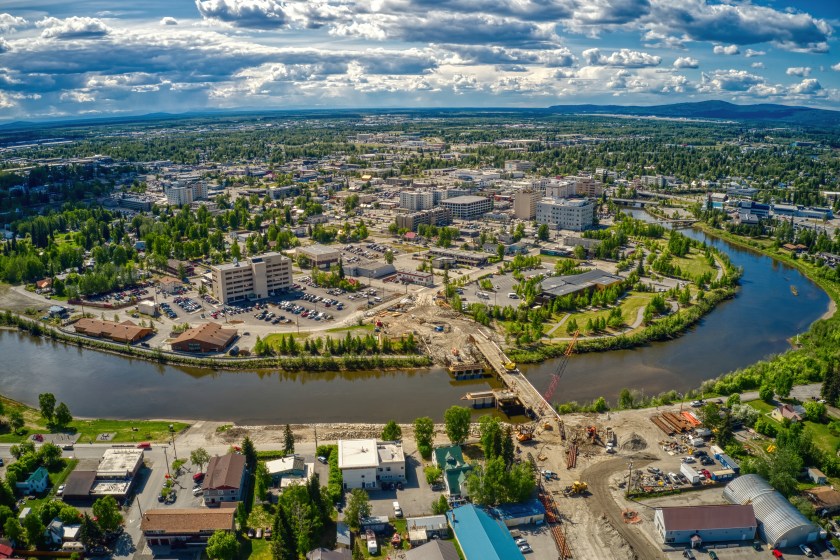
Getty Images, Jacob Boomsma
While you may think that a town that gets as dark and as cold as Fairbanks would die down once the weather starts to set in, I found the opposite to be true when I lived there. There are always local events, concerts, plays, and art shows happening in Fairbanks, and the schedule only seems to pick up as the winter nears. Check out the Fairbanks Concert Association for live music, the Fairbanks Drama Association for plays, and Venue coffee shop for trivia, movie, and craft nights.
If you happen to plan your fall trip to Fairbanks around the first weekend of the month, check out First Fridays, a town-wide event where local artists showcase their art in different businesses. Much of the town turns out to hop between participating venues and enjoy local art, music, and drinks.
You can also find plenty of hiking and cross-country skiing trails right in Fairbanks. While Creamer's Field is best known for its migrating birds, it has plenty of trails to wander in any season, and the field itself is a great spot to catch the Northern Lights. The University of Alaska also has an extensive trail system for both hiking and cross-country skiing—as soon as the snow falls, students and employees often use the trails to commute to class or work by ski. Finally, Birch Hill Recreation Area is known as one of the premier cross-country skiing destinations in the country.
5. Head South to Denali National Park
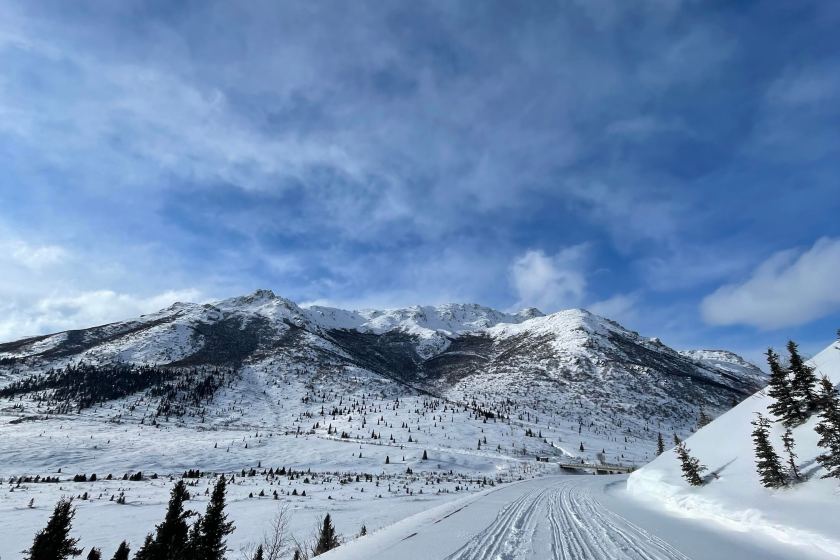
Chelsey Cook for Wide Open Spaces
Just two hours south of Fairbanks, Denali National Park is a must-visit during your fall trip to interior Alaska and remains open year-round. When I lived in Fairbanks, my favorite time to visit Denali was in the late fall and early winter. While the park can be a bit chaotic in the summertime, you'll likely have it to yourself in the fall.
Because it's past tourist season, you'll have the chance to see Denali itself, as well as moose, foxes, or even wolves. Treat this like a remote backcountry trip, and make sure you have the necessary experience. Even in the fall, temperatures can drop well below freezing, and there is no cell service. If you visit the park after September, prepare to be self-sufficient, as most of the hotels and restaurants in the area will be closed.
Of particular note: The bus service into the park and most of the surrounding town closes down in mid-September. The park road stays open to vehicles to Mile 30 until the snow comes in mid-October, at which point it closes to vehicles past Mile 3, making the park road a paradise for cross-country skiing or snowshoeing. Just remember to BYO or rent equipment from any of the several outdoor stores in Fairbanks before you go.
Riley Creek Campground, at the park's entrance, is open and free to use in the winter. There is also a small visitor center with bathrooms and rangers present. Denali National Park is the only national park that has sled dogs, and it has used dogs for over 100 years to patrol the park and help support winter research projects. The sled dog kennels are also often open to visitors unless the dogs are out on patrol in the park.
6. Meet Alaskan Huskies and Go on a Sled Dog Tour
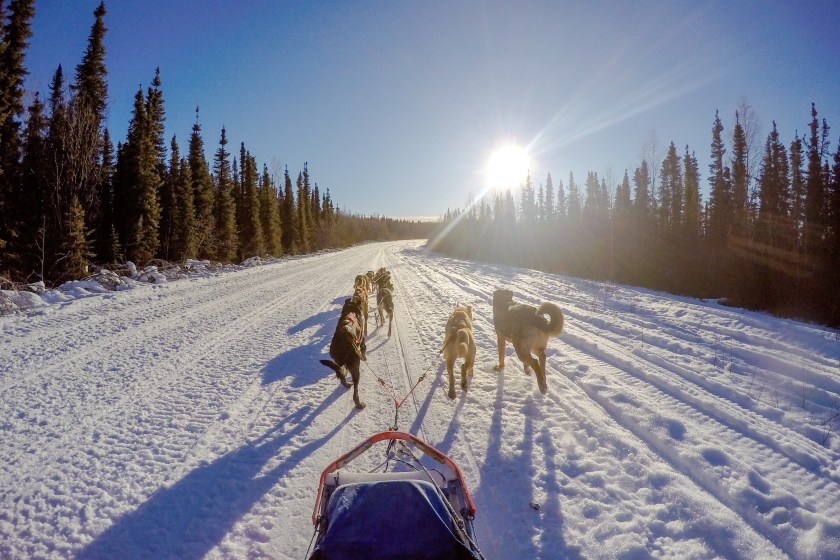
Getty Images, Jenhung Huang
Speaking of sled dogs: While there may not be enough snow yet to run a traditional dog sled, sled dog kennels in the Fairbanks area spend the warmer seasons, including fall, training their dogs on wheels. Teams of dogs are hooked up to ATV-like vehicles, the vehicle is put in neutral, and the dogs pull away. When not in the racing season, many kennels offer sled dog tours where you get to meet the dogs, help get them hooked up, and go for a trail ride through the tundra.
Black Spruce Kennels is a well-known kennel 20 miles north of Fairbanks. Owned by Iditarod musher Jeff Deeter and his wife, KattiJo Deeter, the kennel and their pups offer sled dog safari tours and husky hiking tours, as well as mushing tours when there's enough snow. If you get there early enough in the fall, you may also be able to meet this year's batch of husky puppies.
READ MORE: Where to Fish in Alaska This Fall, According to Local Anglers
